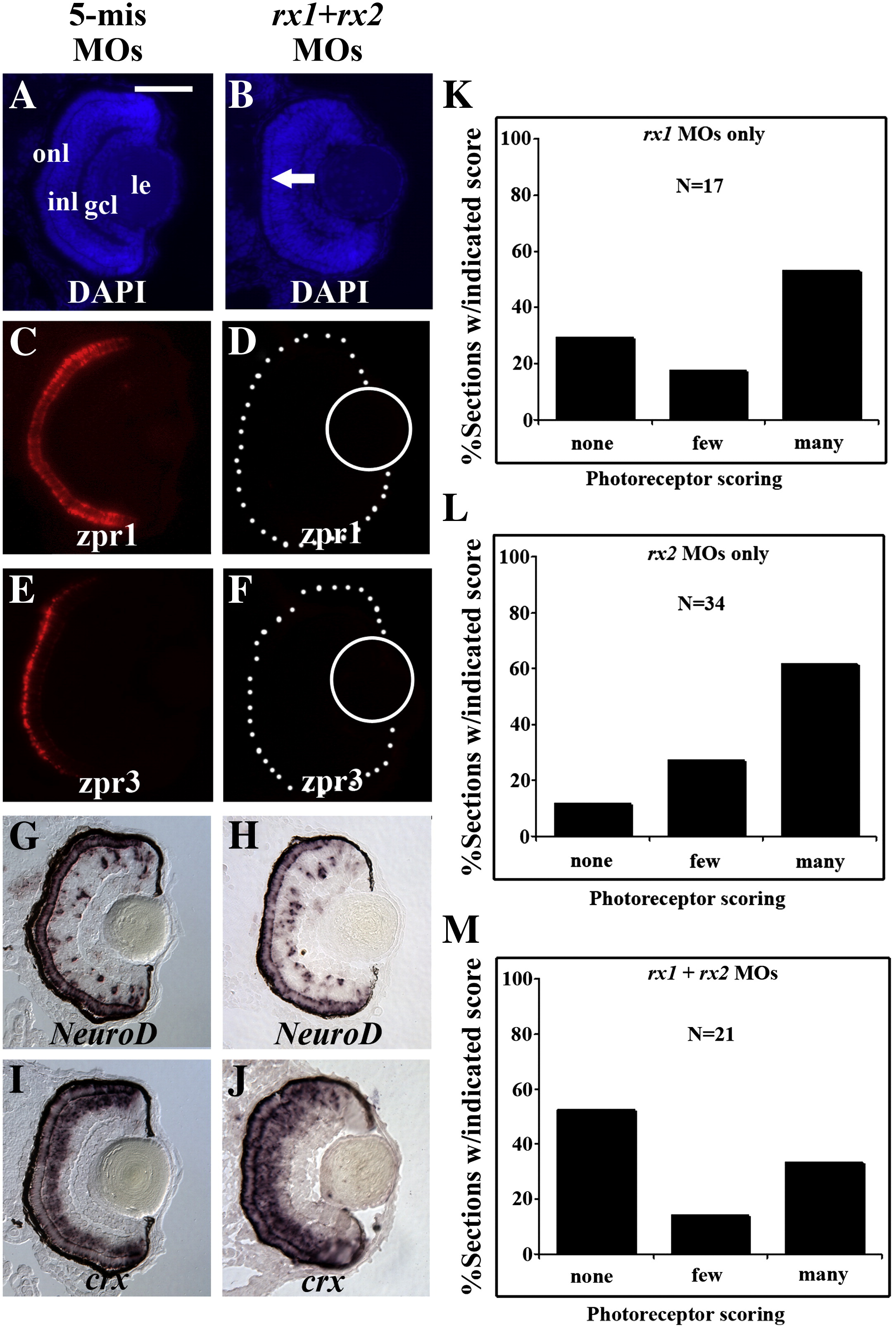Fig. 11 Embryos subjected to temporally-selective (at 44.5 hpf) depletion of rx1 and rx2 show a significant reduction in photoreceptor differentiation. (A–B) DAPI-stained retinal cryosections obtained from control (A) and rx1/rx2-depleted (B) embryos fixed at 72 hpf; onl appears normal in both cases (arrow in B). (C–F) Retinal cryosections obtained from control (C, E) and rx1/rx2-depleted (D, F) embryos fixed at 72 hpf and hybridized with cRNA probes corresponding to NeuroD (C, D) and crx (E, F), showing no effect of retinal homeobox depletion on expression of these transcription factors. (G–J) Retinal cryosections obtained from control (G, I) and rx1/rx2-depleted (H,J) embryos fixed at 72 hpf and stained with the zpr1 (cones; G, H) and zpr3 (rods; I, J) antibodies, showing elimination of markers of photoreceptor terminal differentiation as a consequence of temporally-selective retinal homeobox knockdown. (K–M) Sections bisecting the lens were scored for the absence (‘none’) or presence of fewer than ten (‘few’) or more than ten (‘many’) zpr-1 or zpr3-stained photoreceptors. Relative numbers of sections displaying the indicate score are shown following temporally-selective depletion of rx1 (K), rx2 (L), and rx1 and rx2 (M). Knockdown of both rx1 and rx2 is more effective at reducing photoreceptor differentiation. le = lens, gcl = ganglion cell layer, inl = inner nuclear layer, onl = outer nuclear layer, scale bar in A = 50 μm.
Reprinted from Developmental Biology, 328(1), Nelson, S.M., Park, L., and Stenkamp, D.L., Retinal homeobox 1 is required for retinal neurogenesis and photoreceptor differentiation in embryonic zebrafish, 24-39, Copyright (2009) with permission from Elsevier. Full text @ Dev. Biol.

